
surfresearch.com.au
sereno bishop : surf riding at kailua, 1830s.
sereno bishop : surf riding at kailua, 1830s.
| home | catalogue | history | references | appendix |
 |
surfresearch.com.au
sereno bishop : surf riding at kailua, 1830s. |
| Bishop,
Sereno Edwards: Memories of Old
Hawaii The Mid-Pacific Magazine, Al.H. Ford, Honolulu, Volume 17, Number 3, March 1919 |
Bishop, Sereno Edwards: Boy Life in Old Hawaii
The Mid-Pacific Magazine, A.H. Ford, Honolulu, Volume 17, Number 5, May 1919. |
|
Advertising Section
Page
4Surfriding as Seen From the
Cars of the Rapid Transport Company.
Also printed in Mid-Pacific Magazine Alexander Hume Ford, Honolulu, July 1917. Volume 14 Number 1, Advertising, page 2. |
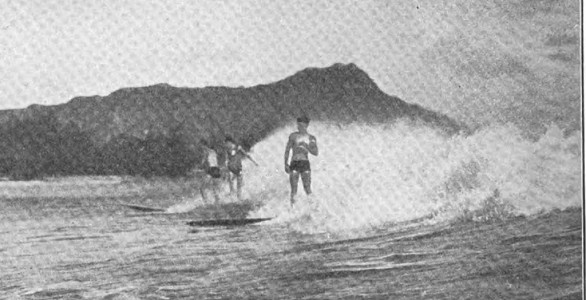 |
| Volume
17, Number 5. Page 472 The surf off Kailu, island of Hawaii. Waikiki, Honolulu, was not the only surfing place known to the old Hawaiian. At Kailua the annual surf-riding contests were held between the chiefs, and even today an occasional native braves the waves here with his board. |
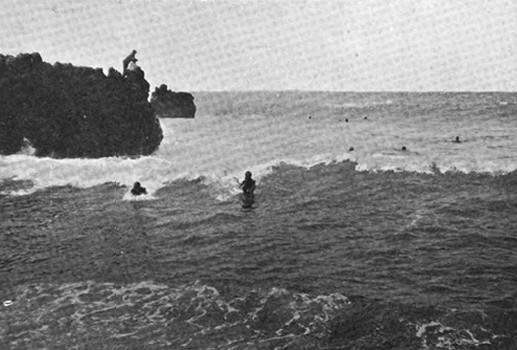 |
|
Boy Life in Old Hawaii
Page 473 My earliest memory of our home at Kailua on the Island of Hawaii, in the year 1831, was that of two thatched cottages, set closely side by side, and raised upon a low stone platform. The outrigger canoe at Coconut
Island. (Hilo?)
|
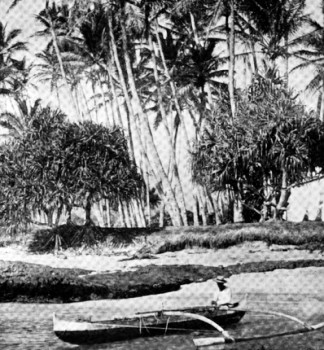 |
| Page 477 An old Hawaiian
surfrider at Waikiki.
James J. Williams : Surf Board
Rider, circa 1893.
[cropped] Printed in Twombly, Alexander S. : Hawaii and Its People Silver, Burdett & Co., 1899, New York, 1899. |
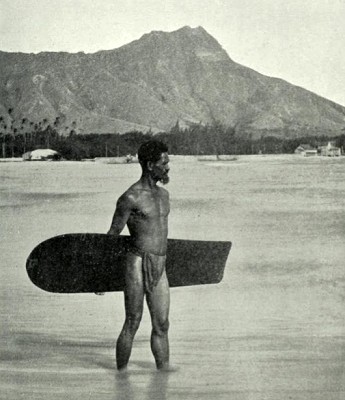 |
| Page 477 |
|
Advertising Section
Page
302Surfriding as Seen From the
Cars of the Rapid Transport Company.
Also printed in Mid-Pacific Magazine Alexander Hume Ford, Honolulu, July 1917. Volume 14 Number 1, Advertising, page 2. |
 |
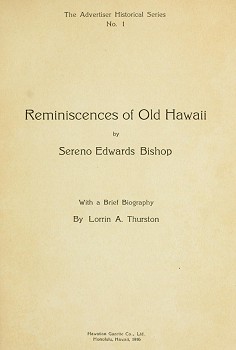 |
Reminiscences of Old Hawaii with a Brief Biography By Lorrin A. Thurston. Advertiser Historical Series no. 1 Hawiian Gazette Co., Ltd., 1916. |
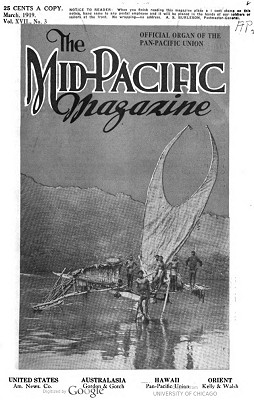 |
Bishop,
Sereno Edwards: Memories of Old Hawaii The Mid-Pacific Magazine, Alexander Hume Ford, Honolulu, Territory of Hawaii, Volume 17, Number 3, March 1919. Boy Life in Old Hawaii The Mid-Pacific Magazine, Alexander Hume Ford, Honolulu, Territory of Hawaii, Volume 17, Number 5, May 1919. Hathitrust http://hdl.handle.net/2027/chi.098053893 |
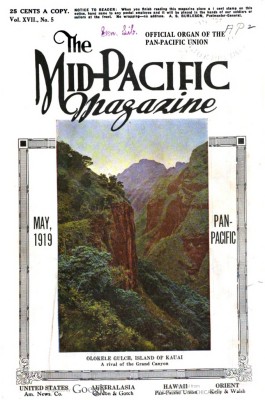 |

| home | catalogue | history | references | appendix |